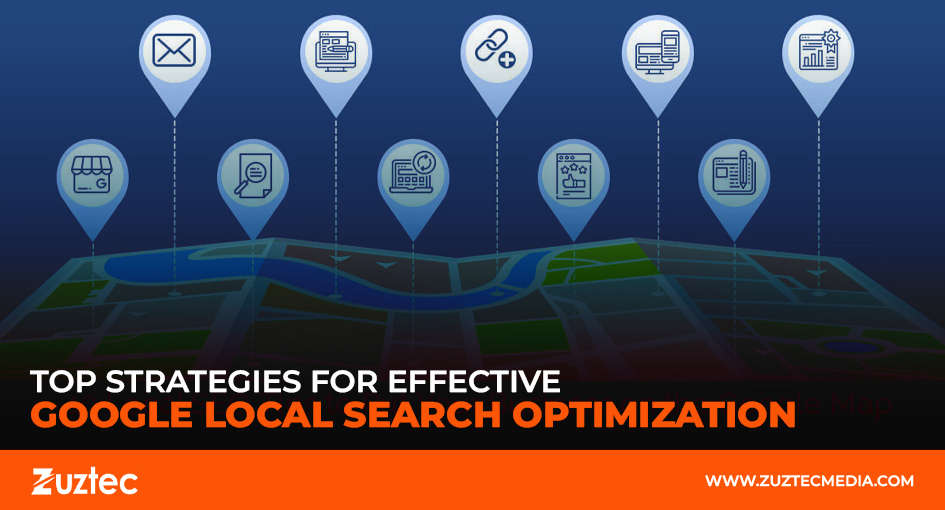
Top Strategies for Effective Google Local Search Optimization
In today’s digital age, local businesses are increasingly relying on online visibility to attract new customers and stay competitive in their markets. With the rise of mobile searches, especially for nearby products and services, appearing in local search results has never been more crucial. Local search results, which are often displayed on Google’s Local Pack and Google Maps, are the first place potential customers look when they’re searching for businesses in their area. To take full advantage of these opportunities, businesses must implement Google local search optimization strategies.
Proper optimization ensures that your business ranks higher on Google’s local search results, making it more visible to potential customers in your geographic area. Local search results are influenced by several factors, including the proximity of your business to the searcher, the relevance of your business to their search query, and the authority of your website and online presence. Optimizing these elements can help you stand out from the competition and attract more local customers.
In this article, we will delve into the top strategies for Google local search optimization, providing practical tips and techniques to improve your rankings. By following these strategies, you can increase your chances of appearing in local search results, driving more traffic to your business and ultimately growing your customer base.
1. Google Local Search Optimization: Claim and Optimize Your Google My Business Profile
The first and most important step for Google local search optimization is to claim and fully optimize your Google My Business (GMB) profile. GMB is a free tool that allows you to manage how your business appears on Google Search and Google Maps. Having an updated and complete profile ensures that your business is visible in local search results and helps users find important information about your business quickly.
To optimize your GMB profile, ensure that your business name, address, and phone number (NAP) are accurate and consistent with other listings online. Add detailed information about your business, including hours of operation, website URL, and business categories. Upload high-quality images of your products, services, or storefront to make your listing more attractive and engaging. Additionally, make use of the “Posts” feature to share news, offers, and updates directly with your customers.
2. Focus on Localized Keywords
Using localized keywords is a crucial part of Google local SEO. These are keywords that target specific geographic locations, such as “plumbing services in Chicago” or “best pizza in Miami.” By incorporating local keywords into your website’s content, meta descriptions, title tags, and headers, you help search engines understand the location of your business and the services you offer. This boosts your chances of appearing in relevant local searches.
When performing keyword research, use tools like Google Keyword Planner or local-specific tools to identify the most relevant keywords for your business. Be sure to focus on both short-tail and long-tail keywords, as long-tail keywords tend to be more specific and have less competition. Also, make sure to include your city or region in important areas of your site, such as product descriptions, blog posts, and service pages.
3. Optimize Your Website for Mobile Devices
With the rise of mobile search, it’s more important than ever to ensure that your website is mobile-friendly. Google local search optimization heavily favors websites that are optimized for mobile devices. Many local searches are made on mobile phones while users are on the go, so it’s essential that your website loads quickly and provides a seamless user experience across all devices.
To optimize your site for mobile, use responsive design, which automatically adjusts your website’s layout based on the screen size. Ensure that your website loads quickly by compressing images, minimizing unnecessary scripts, and using tools like Google’s PageSpeed Insights to improve loading times. A mobile-friendly website not only improves your local search ranking but also provides a better user experience, which can lead to higher conversion rates.
4. Encourage Customer Reviews and Ratings
Customer reviews play a significant role in Google local search optimization. Positive reviews not only enhance your online reputation but also directly impact your local search rankings. Google values businesses with higher ratings and positive feedback, as they’re considered more trustworthy and relevant to users.
Request positive evaluations from your pleased clients on your Google My Business page. Responding to reviews both positive and negative shows that you value customer feedback and are committed to providing great service. Regularly updating your reviews also signals to Google that your business is active and engaged with its customers. Keep in mind that a higher quantity of positive reviews can push your business higher in local search results.
5. Build Local Citations
Online references to your company’s name, address, and phone number (NAP) are known as local citations. These citations can appear on directories, review sites, and local business listings. Building consistent and accurate citations across multiple platforms can greatly impact Google local SEO and help you rank higher in local search results.
Ensure that your NAP information is consistent across all platforms where your business is listed, including Yelp, Facebook, Yellow Pages, and industry-specific directories. Inconsistent or incorrect NAP details can confuse search engines and negatively impact your rankings. Additionally, aim to get listed on local blogs, newspapers, and local websites to boost your business’s credibility and authority in the local community.
In conclusion, effective Google local search optimization is crucial for any business looking to attract local customers and boost its online presence. By implementing strategies such as optimizing your Google My Business profile, focusing on localized keywords, and encouraging customer reviews, you can significantly improve your visibility in local search results. Additionally, ensuring your website is mobile-friendly, building local citations, and creating locally relevant content will further enhance your rankings. By following these best practices, you can position your business for success in the competitive local market and drive more organic traffic to your website.

